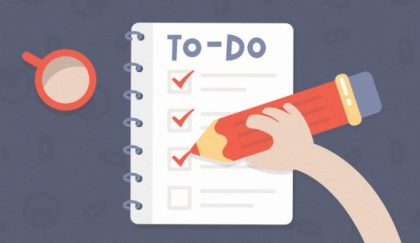How to Create Great Content: An Outline

We’ve all heard the term content-first — in order to implement this, you actually need content planning first. Outlining content is not just integral for those making it but also for the designers and developers working in lockstep with you. In the latest episode of Strategy Bytes, Lisette and Andrew break down how thoughtfully positioned content will always be a better strategy than ‘Lorem Ipsum’.
Strategy Bytes Transcript
LISETTE
Sitting down to write is hard. Like, really hard. Like avoiding Game of Thrones spoilers hard.
ANDREW
I still don’t think that Jaime should have–
LISETTE
SHHH. Nope. No. We’re not going there. Anyway. Yes, writing is hard, especially when you’re staring down the gauntlet of a deadline or a website or a campaign launch. How do you decide what needs to happen first, or even more daunting, how do you coordinate with other teams? Because you’re likely not just doing blogs–which are hard enough to do–you’re probably supposed to tie evergreen content on your website with social media, with webinars with any other types of content you decided to run with from last week’s episode. Content is king, but a king is nothing without a governance plan.
ANDREW
Yeah, look at the French Revolution. Bad content planning.
LISETTE
This is StrategyBytes.
ANDREW
I’m your host, Andrew.
LISETTE
And I’m your host, Lisette. Let’s start simple. You have a new page on your website that you need to coordinate writing, designing, coding, all that stuff. What order do you do all that in? Do you start with the development of the page? Or the design? Or do you start with the content?
ANDREW
The answer is content first. Always content first. Or else you’re going to be trying to fit a 500-word peg into a 100 character hole.
LISETTE
You see, well-planned content is like a good story. Everything fits, everything has a purpose. The plot points all line-up and you feel a level of catharsis when you get to the end. In this case, a call to action. So how do you plot out a good story? Well, identifying the purpose of the page is the best place to start.
ANDREW
Journalists structure their content similarly. They create the thesis, the bottom line, up front. Your content outline is like an inverted pyramid. You start with the big idea first, and then get down to the details as you go along. You don’t want to confuse your users about what the purpose of the page is, why it is important, why they are even there…
LISETTE
Ugh, yeah. No one wants to go through an existential crisis when reading up on your services. So start small. What is the purpose of the page? Then, once you’ve determined that, identify the target audience for the page and begin your content outline. List ALL the content you have at your disposal, and what would be most effective considering your target audience. Now it’s time to order the content on the page, again, with the most important first. After you finish the outline, set up a voice and tone.
ANDREW
Voice and tone are how you speak to your audiences. We mentioned this in the Writing for Web episode. Are you authoritative? Friendly? Where do you fall on that spectrum? This will help you write and can also determine the style of the design on the page.
LISETTE
When you’re working with a designer and/or developer, they should be able to work with your predetermined content outline and help you flesh it out to make sense with your brand. This is where communication across teams is crucial. You want to make sure your designer knows that the component with the image and the descriptor text needs to fit at least three sentences, not just three words.
ANDREW
Better yet, if you finish writing up ALL the content on the page, your designers can be better served by working with you on the best ways to break it up and make it more visibly digestible.
LISETTE
While planning content, documentation is so important. Make a spreadsheet, and list out all the things that will make content entry easier. Documentation should include:
- All text with appropriate heading weights and formatting (including button/link text)
- Notes on the positioning of content (side by side, slider, etc.)
- Associated layouts and components
- Links/URLs
- Imagery/Video, including alt-text, size, and direct links to source
- Any taxonomies and tags- SEO metadata (keywords, URL structure, meta description, etc)
Any writer worth their salt will make sure that the content isn’t just readable to your end user, but to the search engine. Always make sure your content plans include keywords, interlinking, metadata, alt-text and other SEO strategies.
ANDREW
And people think writing is easy.
LISETTE
Fools.
BOTH LAUGH.
LISETTE
Well, if we’ve convinced you, dear listener, you’ll love our chat with Carrie Hane, an expert in content strategy with her own book on Content First approaches. So stay tuned.
